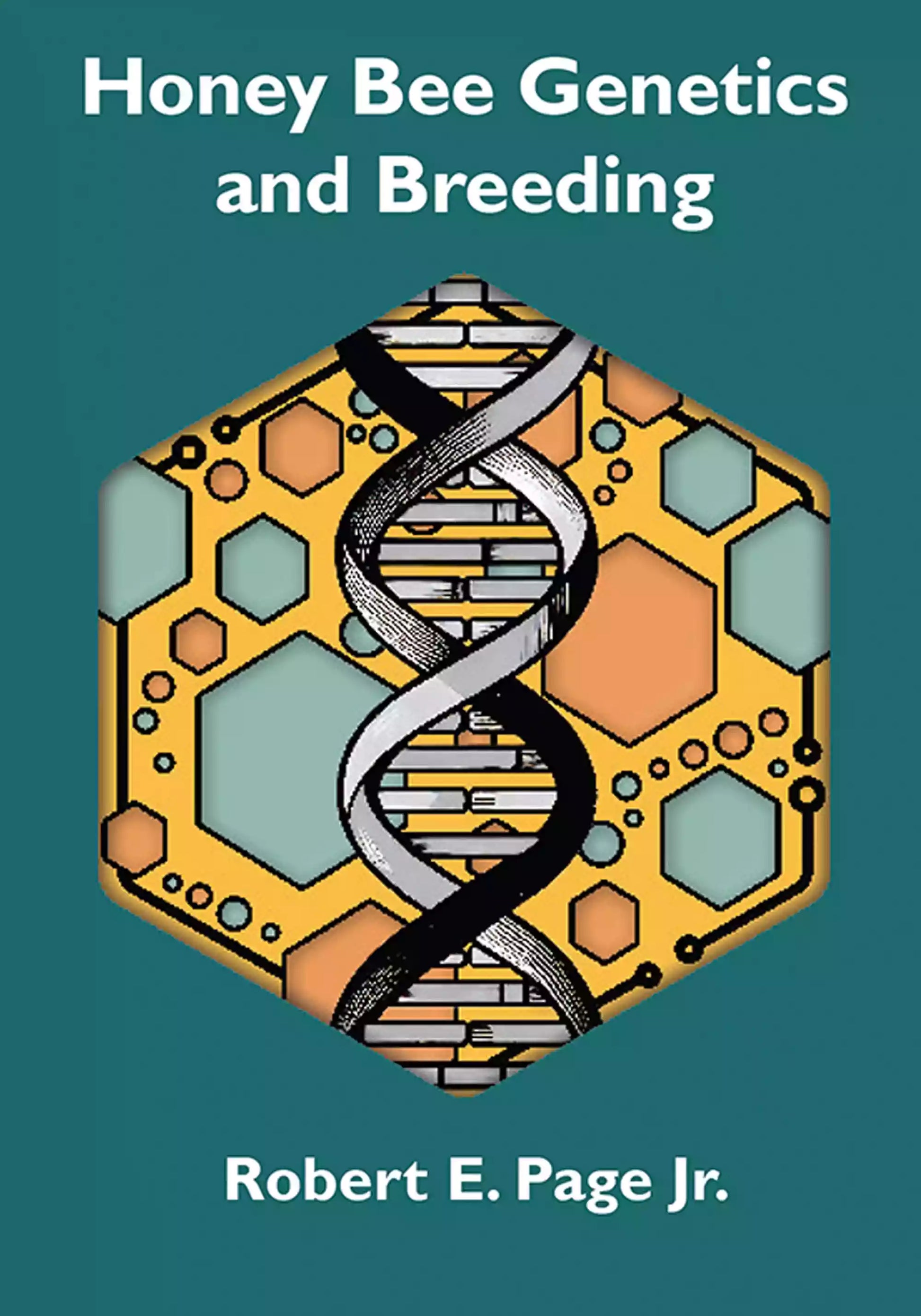Honey Bee Genetics and Breeding, Page

Honey Bee Genetics and Breeding
A landmark book ".. and probably the best reference for learning about bee breeding theory and practice and the history of honey bee genetics." - Greg Hunt, Purdue University, Professor Emeritus.
"Rob Page is arguably the world's expert in honey bee breeding," This book "has all necessary information plus a good amount of the history of honey bee genetics and breeding. The book is a good and clearly written introduction into the underlying mechanisms and methods of honey bee breeding. He clarifies many misunderstandings and confusions stemming from myth, prejudice and simply ignorance of the underlying genetic mechanisms and population genetic processes." He offers "examples of both successful and unsuccessful bee breeding programs."
– Prof. Dr. Jürgen Gadau, Institut für Evolution und Biodiversität, Hüfferstraße, Münster, Germany
VIEW Contents
- Copyright
- About the Author
- Dedication
- Preface
- Forward
- Principles of Inheritance
- Breeding, selection, and inheritance
- The physical basis of inheritance
- Mitosis
- Meiosis
- Independent segregation
- Independent assortment
- The germ cells
- Egg fertilization
- Parthenogenesis
- Arrhenotoky
- Thelytoky
- Mosaics and gynandromorphs
- Mechanism of sex determination
- Population genetics of sex determination
- Suggested reading
- Mechanisms of Inheritance
- The phenotype
- Modes of inheritance
- Single gene traits
- Polygenic traits
- Multifactorial inheritance
- Hybrid vigor
- Social overdominance
- Mapping genetic traits
- Making a genetic map
- The honey bee linkage map
- Mapping and identifying genes
- Mapping single gene traits
- Mapping quantitative traits
- Mapping quantitative traits
- Marker-assisted selection
- Double-stranded RNA
- CRISPER
- Application of genetic tools
- Phenotypic architecture
- Genetic architecture
- Suggested reading
- Principles of Breeding
- Stock evaluation
- Goals of breeding
- Expectations
- Fundamentals of breeding
- The assay
- Controlled mating
- Comparative evaluation
- Genetic variation
- Sources of bees
- Local commercial bees
- Commercial bees from afflicted areas
- Races of bees
- Feral bees
- Mating designs
- Breeding temminology
- Relationships in the hive
- Distribution of genetic variance
- Inbred-hybrid breeding
- Calculating inbreeding coefficients from pedigrees
- Inbreeding designs
- Self-fertilization
- Mother-daughter mating
- Father-daughter mating
- Super sister-super sister mating
- Specific and general combining ability
- Advantages and disadvantages
- Circular mating systems
- The assay
- Advantages and disadvantages
- Closed population breeding and mass selection
- Breeding theory
- New World Carniolan program
- Advantages and disadvantages
- Mass selection and open mating
- Mass phenotypic selection for royal jelly production with open mating
- Sources of bees
- Assay
- Results
- Conclusion
- A simple program for beekeepers
- Suggested reading
- Stock evaluation
- Disease Resistance
- Mechanisms of disease resistance
- Individual imunity
- Social immunity
- Selection for disease resistance
- Resistance to American foulbrood disease, O.W. Park
- Source of bees
- Mating system
- Assay
- Mechanisms of resistance
- Resistance to American foulbrood disease, W.C. Rothenbuhler
- Source of bees
- Mating system
- Assay
- Mechanisms of resistance
- Resistance to tracheal mites
- Source of bees
- Assay
- Mating system
- Mechanism of resistance
- Varroa
- Natural history
- Origin of varroa
- Mechanisms of resistance
- Hygienic behavior
- Mite reproduction
- The attractiveness of brood and adult bees
- Post-capping stage
- Cell size
- Grooming behavior
- Selection for Varroa resistance
- Sources of bees
- Africanized honey bees
- Russian honey bees
- Surviving colonies
- Feral bees
- Assays for hygienic behavior
- Pin-killed brood
- Freeze-killed brood
- Mite population increase
- Mite drop
- Mite damage
- Sugar shake
- Alcohol wash
- Sources of bees
- Successful breeding programs
- Europe
- North America
- Minnesota hygienic line (MN HYG)
- Selection for reduced mite population growth
- Indiana mite-biters
- Unsuccessful breeding program for varroa resistance
- Perspective and conclusions
- Suggested reading
- Resistance to American foulbrood disease, O.W. Park
- Mechanisms of disease resistance
- Defensive Behavior and Honey Production
- Defensive behavior
- Components of defensive behavior
- Individual defense response
- Colony defense
- AFB and EHB as genetic and phenotypic probes
- Response dynamics
- Phenotypic architecture
- Genetic architecture
- Components of defensive behavior
- Heritability
- Breeding value
- Honey production
- Phenotypic selection
- Genetic selection
- European selection program
- Canadian selection program
- Mating system
- Assays
- Breeding value selection
- Results of selection
- Genetic versus phenotypic selection
- Mass phenotypic selection and open mating in Mexico
- Source of bees
- Assays
- Honey production
- Defensive behavior
- Assessment of capped brood pattern
- Determination of average forewing length of workers
- Queen verification
- Mating system
- Standard stock for comparison
- Results
- Advantages and disadvantages
- Suggested reading
- Defensive behavior
- Glossary
- Index
- Reviewer Comments
Unavailable